Customers at a Fred Meyer store were left scratching their heads as well as clutching their bellies in pain if they happened to notice this really bad deal on Pepto-Bismol at a Fred Meyer store. Tipster Scott took a photo of the items on the shelf. Somehow, buying a two-pack leads to the per-ounce price doubling, even when the price for that package is less than double the price of a single bottle. [More]
fuzzy math
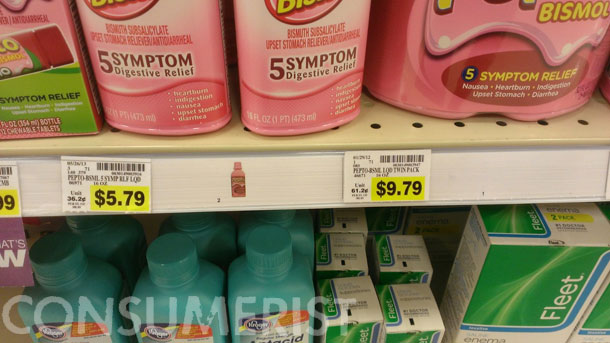
Fred Meyer Not Sure How Unit Pricing Works
Neighborhood Vons Store, I’m Really Worried About You
David’s family are the very definition of loyal customers: they have shopped at the same Vons store for 50 years now. Not just “at Vons”: at the same location all that time. They know the layout of the store well. Now, David is worried. He’s worried that this venerable store has forgotten how prices work. [More]
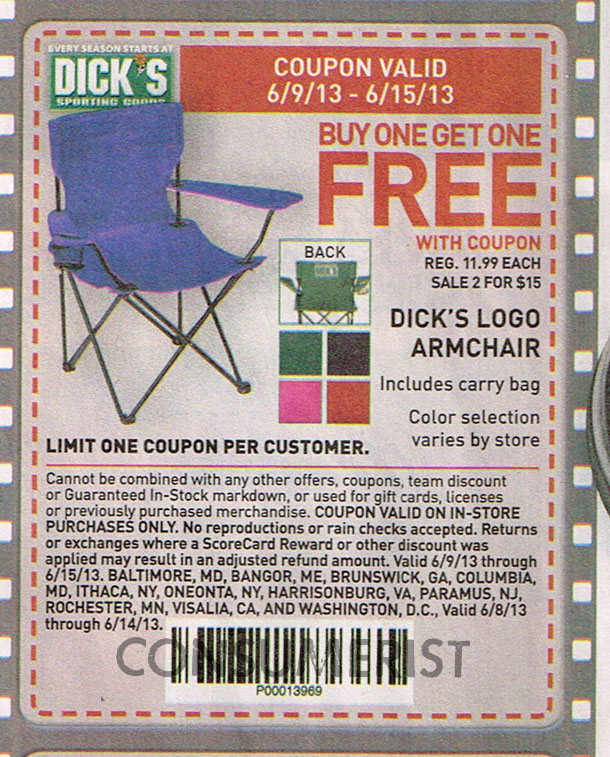
Dick’s Sporting Goods Sale Makes A Mockery Of The Buy One Get One Free Concept
If you don’t have room in your budget for discounted fitness equipment from Dick’s Sporting Goods, maybe you could use a fabric folding chair. Dick’s Sporting Goods has a pretty good deal on chairs bearing their logo, at only $7.50 each if you buy two. The problem, reader Peter points out, is that the “regular” price is $12. [More]
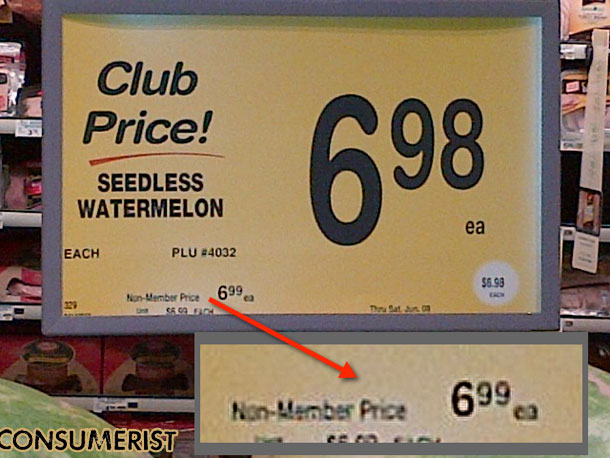
Too Bad You Missed This Amazing Members-Only Sale At Safeway
“Man oh man, I’m sure glad that we have a Safeway Club Member loyalty card!” writes reader Richard. Even if you have a card, dearest readers, you’re going to miss out: the sale ended on Saturday.

Fuzzy Math: Why You Should Always Check Unit Prices
Most of the time, when a vendor understands retail logic and basic math, an item costs less per unit when you buy more of it. Sometimes, due to errors or sale prices, things cost more per unit when you buy more. We call this phenomenon “Fuzzy Math,” and laugh at it. Reader K. found this great example of such fuzziness at a Harris Teeter store, where customers who buy the larger box are seriously missing out. [More]
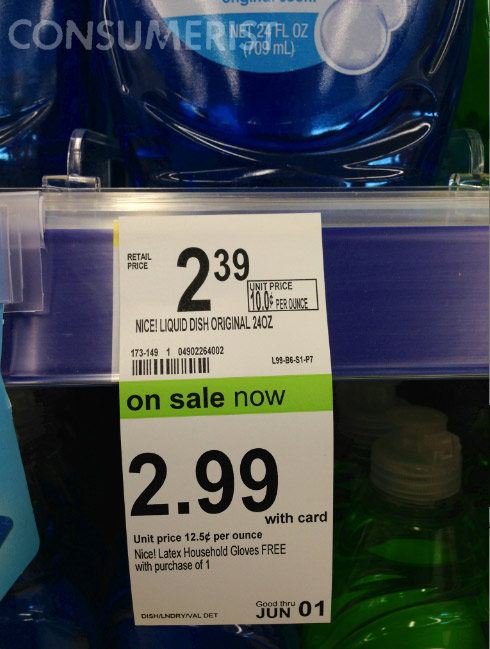
How Much Does A Free Pair Of Gloves Cost? 60 Cents
Walgreens, it’s great that you’re trying to encourage sales of your “Nice!” house brand by giving away free coordinating stuff with, say, a bottle of dish soap. It’s the part where you’re underestimating their intelligence that’s kind of bad. For example, charging an extra 60 cents, then saying that something is on “sale” and comes with free stuff. [More]
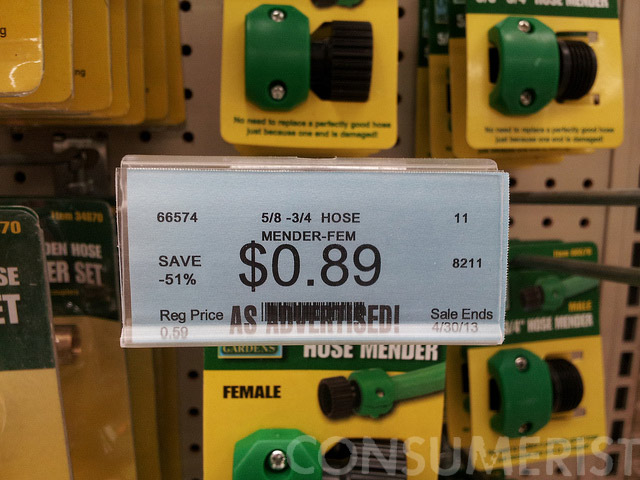
Too Bad You Missed The -51% Off Sale At Harbor Freight
Flickr user classmanager snapped this picture last week at Harbor Freight, a discount hardware store. It’s a beautiful and confusing example of fuzzy math because it isn’t just a few cents more expensive than the regular price of the item: they went ahead and put it on -51% sale, and brag about it. [More]
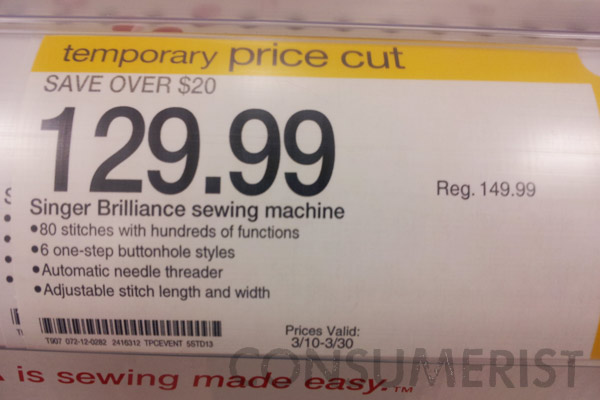
Target Still Struggles With Reality, Thinks ‘More Than’ Is A Meaningless Marketing Phrase
It’s kind of confusing when phrases like “more than” and “over” have become nothing more than meaningless marketing buzzwords. Three and a half years ago, we brought you a set of light-blocking curtains that block more than 100% of light. It sounds nice, but is physically impossible. Reader Liz found a similar marketing oddity at Target, where a sign brags about a discount of “more than” $20 when the discount is, in fact, exactly $20. [More]
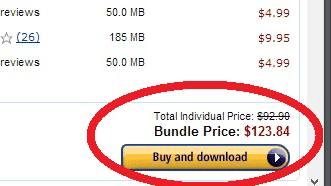
Amazon Channels Target, Charges More To Buy More Games
The idea behind buying items in a bundle is that in exchange for buying a larger quantity of a single item or a variety of items, the merchant gives you a discount. You give them more business, they give you a better price. That’s how it’s supposed to work, but sometimes this whole system falls apart and prices go up as you buy more. [More]
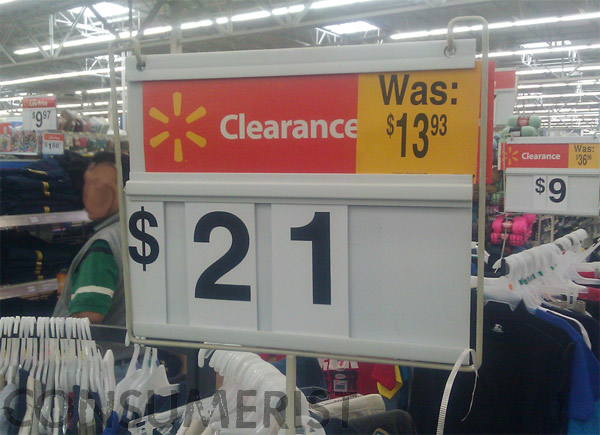
Walmart: Prices So Low, We Have To Raise Them To Put Things On Sale
Welcome to Walmart, where our prices are so low, we have to raise prices to put things on clearance! No, wait, that doesn’t really make sense. Hmm. Most likely, some prankster rearranged the numbers in this sign that reader Anthony found this weekend. That’s the story we’ll go with, because we like to retain some faith in the staff of Walmart. [More]

On Planet Fitness, Math Is Still Difficult
Reader JL spotted this update to a sign that we posted two years ago. It’s almost comforting to know that math is still not required on Planet Fitness. [More]
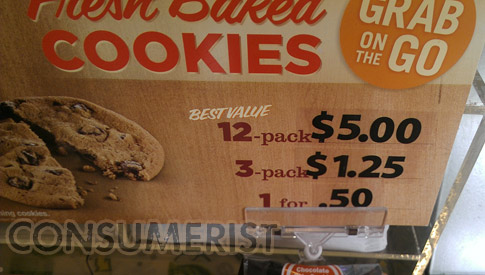
Put A Bird And A Price Tag On It: Fuzzy Math In The Wild
Usually, retailers lower the price of an item per unit when you buy more of it. For example, a gallon of juice costs much less per unit than a single-serving bottle. When this system falls apart, and it frequently does, we call it “fuzzy math.” [More]

Domino’s Online Pizza Ordering Now Featuring Pick Your Own Price Option
We write a lot about fuzzy math here at Consumerist, mostly because if you’re observant, you can often get what you want for a lower price than perhaps the retailer intended to sell it for. Case in point: Consumerist reader Tyler was gearing up to order pizza online from Domino’s the other night, and noticed some bizarro pricing. [More]
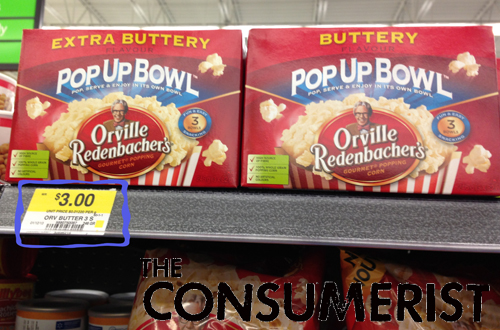
Walmart Features Pick A Price, Any Price For Pop Up Bowl Microwave Popcorn
Good afternoon, class. It’s time for yet another lesson in “Do The Math Before You Pick Which Package Of A Product To Buy.” Today’s example comes from Consumerist reader Brian, who spotted various price options at his local Walmart for microwave popcorn. Three identical products in three different options, but which one to buy? [More]
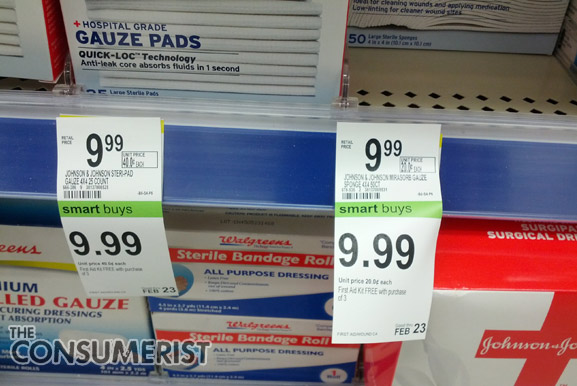
Walgreens Fuzzy Math Means This ‘Smart Buy’ Is Less Smart Than It Appears
Just in case you thought that the phrase “smart buy” actually had any meaning at Walgreens, here’s proof that employees might just be slapping that label on everything, then calling it a day. Reader Ben found these two different packages of gauze pads, both labeled “smart buys.” [More]

Kohl’s Employee Explains Math-Impaired Signage
Vindication for reader Garrett: a real, live Kohl’s employee agrees that the “60% off plus 25% off equals 85% off” sign that he spotted in his local store makes no sense. That’s because this person studies engineering, which means that he or she has some familiarity with how math works. They explained to us what Garrett should have done, as well as the likely origins of this wacky sign. [More]
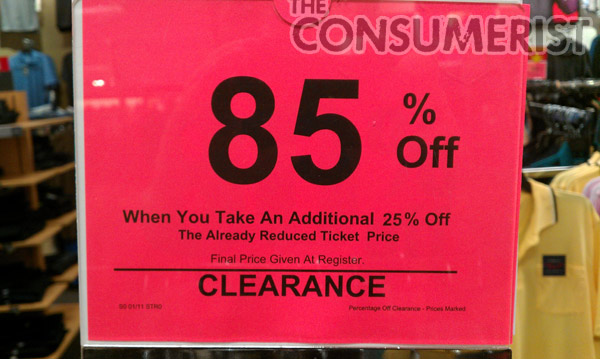
At Kohl’s, 60% Off Then 25% Off Means 85% Off
Garrett understands math. And he knows that 60% off, then 25% off does not equal 85% off. That’s what the signs at Kohl’s said, and he assumed that was the discount he would get. No, the items he bought rang up at the lower price. He wrote to Kohl’s, thinking maybe that they would say, “Oh, yes, customer, you’re right; we just had the wrong signs up.” Not so fast! They insisted that the wrong math was really right. [More]

Someone Needs To Talk To Kellogg’s About The Meaning Of ‘Value’
“Walmart will charge me 50 cents more for the luxury of getting 10 bars instead of just 5!” Mike write when he submitted this photo using the Consumerist Tipster App. He’s being unfair: who doesn’t want to pay extra for the privilege of dragging a bigger box home from the Super Walmart? [More]

